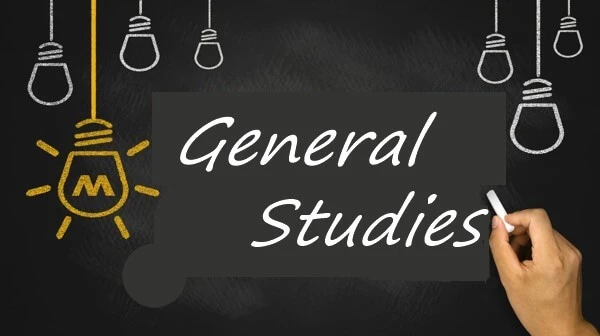Periodic Motion Books
Author: L Okolosi
School: WAEC, JAMB & POST UTME
Department:
Course Code: SSCE
Topics: motion, physics, friction, work, energy, power, efficiency, heat energy, temperature, kinetic molecular theory, electric charges, gravitational field, magnetic field, magnetism, magnet, electric field, elasticity, elastic material, Hooke's law, tensile stress, tensile strain, crystal structure, crystallization, fluids, capillarity, viscosity, scalar, vector, projectiles, Archimedes principle, simple harmonic motion, linear momentum, impulse, inertia, collisions, mechanical energy, machines, potential energy, pully system, inclined plane, Gas laws, Waves, light waves, optical instruments, sound waves, atmospheric pressure, Pascal's principle, electromagnetic waves, current electricity, magnetization, simple alternating current, radioactivity, nuclear reactions, energy quantization, wave particle paradox, electronics, rocket, satellites, physics practical
Author: Efosa
School: University of Ibadan
Department: Science and Technology
Course Code: CHE127
Topics: periodic table, periodicity, hybridization, metal, descriptive chemistry, transition metal, radioactivity
Author: Steven Zumdahl, Susan Zumdahl, Donald DeCoste
School: University of Ibadan
Department: Science and Technology
Course Code: CHE127, CHE157, CHE177, CHE257, CHE327, CHE428
Topics: Atom, Molecule, Ion, Stoichiometry, chemical reaction, gas, thermochemistry, atomic structure, periodicity, bonding, covalent bond, orbital, liquid, solid, solution, chemical kinetics, chemical equilibrium, acid, base, acid-base equilibria, solubility, Complex Ion Equilibria, Spontaneity, Entropy, Free Energy, Electrochemistry, Nucleus, Representative Element, transition metal, coordination chemistry, organic molecule, biological molecule, Dalton’s Atomic Theory, Periodic Table, Atomic Mass, mole, molar mass, chemical equation, stochiometric calculation, Precipitation Reaction, acid-base reaction, oxidation-reduction reaction, gas law
Chemistry The Molecular Nature of Matter and Change ,9th edition
Author: Martin Silberberg, Patricia Amateis
School: University of Nigeria, Nsukka
Department: Science and Technology
Course Code: CHM112
Topics: Chemistry, matter, Stoichiometry, Chemical Reactions, Kinetic-Molecular Theory, Thermochemistry, Quantum Theory, Atomic Structure, Electron Configuration, Chemical Periodicity, chemical bonding, Shapes of Molecules, covalent bonding, Intermolecular Forces, Periodic Patterns, Organic Compounds, carbon, chemical reactions, chemical kinetics, chemical equilibrium, Acid-Base Equilibria, Ionic Equilibria, Thermodynamics, Entropy, Free Energy, Reaction Direction, Electrochemistry, Chemical Change, Electrical Work, Transition Elements, nuclear reactions
Principles of General Chemistry ,3rd edition
Author: Martin Silberberg
School: University of Nigeria, Nsukka
Department: Science and Technology
Course Code: CHM101, CHM112, CHM122
Topics: matter, chemical reactions, gases, Kinetic Molecular Theory, Thermochemistry, Energy Flow, Chemical Change, Quantum Theory, Atomic Structure, Electron Configuration, Chemical Periodicity, Chemical Bonding, Shapes of Molecules.Covalent Bonding, Intermolecular Forces, Periodic Patterns, solutions, Organic Compounds, carbon, Mechanisms of Chemical Reactions, Acid-Base Equilibria, Ionic Equilibria, Thermodynamics, Entropy, Free Energy, Electrochemistry, Chemical Change, Electrical Work, Transition Element, Nuclear Reactions
Student Solutions Manual to accompany Principles of General Chemistry
Author: Martin Silberberg, Patricia Amateis
School: University of Nigeria, Nsukka
Department: Science and Technology
Course Code: CHM101, CHM112, CHM122
Topics: matter, chemical reactions, gases, Kinetic Molecular Theory, Thermochemistry, Energy Flow, Chemical Change, Quantum Theory, Atomic Structure, Electron Configuration, Chemical Periodicity, Chemical Bonding, Shapes of Molecules.Covalent Bonding, Intermolecular Forces, Periodic Patterns, solutions, Organic Compounds, carbon, Mechanisms of Chemical Reactions, Acid-Base Equilibria, Ionic Equilibria, Thermodynamics, Entropy, Free Energy, Electrochemistry, Chemical Change, Electrical Work, Transition Element, Nuclear Reactions
Schaum's Outline of College Chemistry ,Ninth edition
Author: Jerome Rosenberg, Lawrence Epstein, Peter Krieger
School: Ahmadu Bello University, Zaria
Department: Science and Technology
Course Code: CHEM131
Topics: temperature, temperature units, atomic mass, molar mass, molecular mass, relative atomic mass, emperical formula, chemical formula, limiting reactant, chemical reactions, gas, gas volume, pressure, standard atmospheric pressure, pressure measurement, gas law, Boyle's law, Charles's law, Gay-lussac law, combined gas law, ideal gas, ideal gas law, kinetic theory, avogardo hypothesis, molar volume, gas volume, gas stoichiometry, thermochemistry, heat, heat capacity, calorimetry, energy, enthalphy, thermochemical reactions, atomic structure, particle, waves, Pauli principle, Periodic law, Aufbau principle, Electron configuration, Atomic radii, ionization energy, electron affinity, chemical bonding, molecular structure, ionic compounds, covalence, valence-bond representation, molecular-orbital representation, π BONDING, MULTICENTER π BONDS, coordination compounds, isomerism, solid, liquid, crystals, crystal forces, Ionic Radii, oxidation-reduction, oxidation number, oxidizing agents, reducing agents, ionic notation, balancing equations, concentration, concentration scales, concentration units, dilution, volumetric standard solutions, vapor pressure lowering, freezing-point lowering, boiling-point lowering, Boiling-point elevation, osmotic pressure, Law of distribution, isomerism, functional groups, organic chemistry, biochemistry, thermodynamics, chemical equilibrium, Equilibrium constant, Le Chatelier's principle, acid, base, hydrolysis, buffer solution, indicators, weak polyprotic acids, tittration, complex ions, coordination complexes, electrochemistry, solubility product, electrical units, electrolysis, voltaic cells, standard half-cell potentials, free energy, Nonstandard potentials, rate of reactions, rate constant, energy of activation, Nuclear process, Binding energy, nuclear equations, radiochemistry
Chemistry For Dummies ,2nd edition
Author: John Moore
School: Covenant University
Department: Science and Technology
Course Code: CHM221
Topics: Chemistry, Scientific Method, SI Measurement System, chemical calculations, matter, energy, atom, atomic structure, periodic table, chemical reactions, mole concept, solutions, thermochemistry, Enthalpy, heat of reaction, acid, base, quantum theory, ionic bonding, Covalent Bonding, Intermolecular Forces, Condensed States, environmental chemistry, air pollution, water pollution, nuclear chemistry
Chemical Principles (Part 2), 6th edition
Author: Peter Atkins, Loretta Jones, Leroy Laverman
School: Edo University
Department: Science and Technology
Course Code: CHM111
Topics: chemical equilibria, acid, base, weak acid, polyprotic acid, polyprotic base, aqueous equilibria, buffer, titrations, electrochemistry, redox reaction, galvanic cells, electrolytic cells, chemical kinetics, reaction rates, reaction mechanisms, catalysis, periodic trends, hydrogen, alkali metals, alkaline earth metals, boron family, carbon family, nitrogen family, oxygen family, halogens, noble gases, nuclear radiation, nuclear energy, d-Block elements, coordination compounds, organic chemistry, hydrocarbons, aliphatic hydrocarbons, aromatic hydrocarbons, polymers, biological compounds, nuclear chemistry, nuclear decay
Author: CHM FUNAAB
School: Federal University of Agriculture, Abeokuta
Department: Science and Technology
Course Code: CHM101
Topics: Atom, molecule, electronic configuration, electron orbital, quantum numbers, principal quantum number, orbital angular quantum number, magnetic quantum number, spin magnetic quantum number, Aufbau principle, Hund's rule, Pauli-Exclusion principle, periodic table
Departments

Administration, Social and Management science

Agriculture and Veterinary Medicine

Arts and Humanities

Education

Engineering

General studies

Law

Medical, Pharmaceutical and Health science

Science and Technology